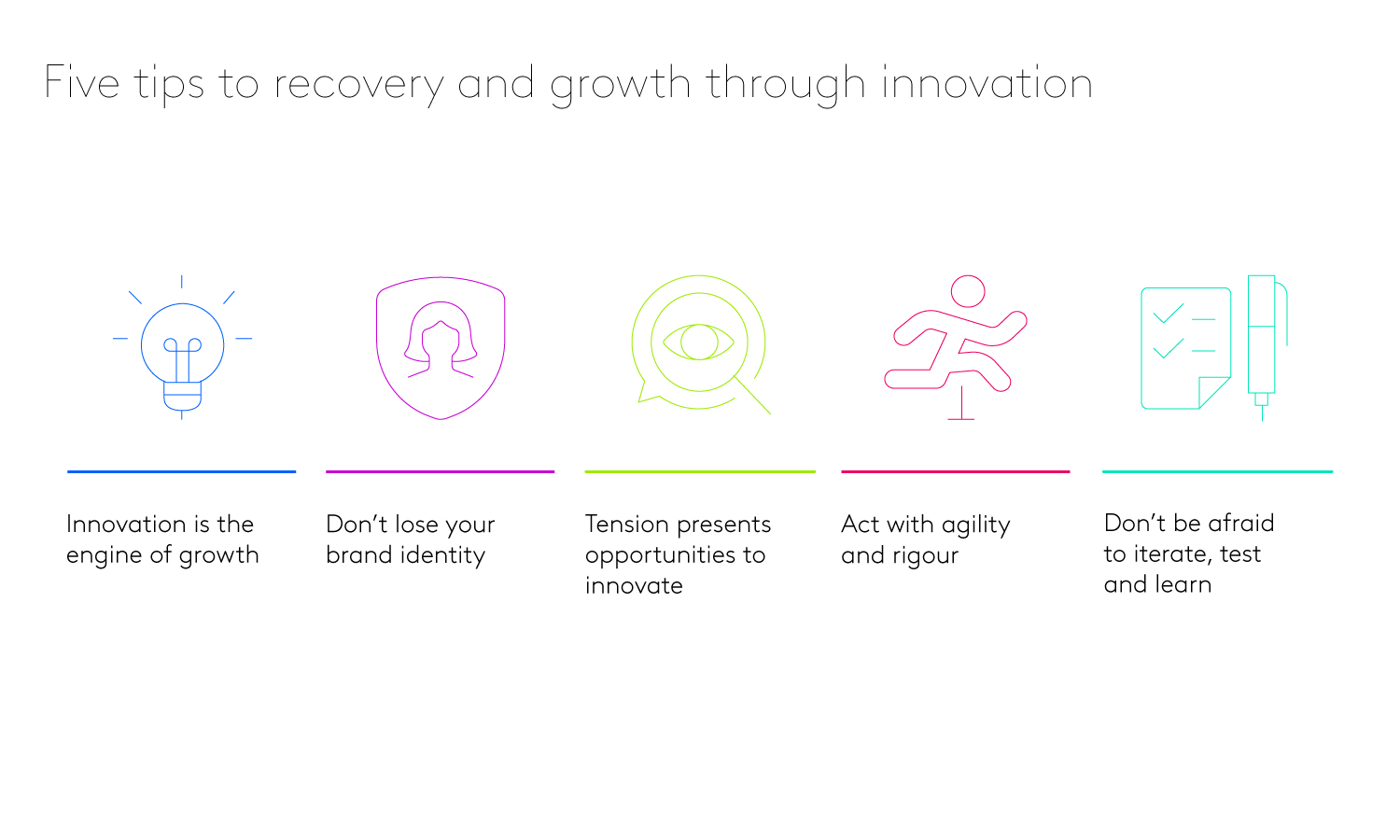Crises present opportunities for growth. In the tensions of dire circumstance are the seeds of regeneration and renewal. Southwest Airlines announced its 47th consecutive year of profitability in January at the beginning of the pandemic. Unfortunately, even the longest track records for year-on-year growth have been disrupted by COVID-19.
Consistent reinvention is classically difficult for organisations to achieve. Few organic entities can effectively juggle the delicate balance between chaos and order that is the dance of progress. Every day new entrants sideswipe established players out of action from their blind spots. Incumbents have reacted by spinning off skunkworks of various sorts, to keep the Innovator’s Dilemma at bay.
Oftentimes, these new business arms rush at innovation opportunities with speed and mistake this for agility. There is a tightrope to be walked between fast results, creativity and rigour – whereby robust, meaningful insight and real, transferable learnings are not sacrificed for speed.
So, how can businesses better manage innovation?
You may have heard of an inspiring innovation experiment from the American industrial designer Peter Skillman. It is called The Marshmallow Challenge – not the one where kids need to delay gratification – but the one where teams have 18 minutes to build the tallest freestanding structure that they can out of masking tape and dry spaghetti to support a lone marshmallow. Skillman has performed these experiments with over 70 groups and the highest scoring group amongst engineers, MBA students and CEO’s turns out to be kindergarteners. In the typical scenario the kids keep planning to a minimum and no one tries to dominate the process. The kids also place the marshmallow at the top of their structure from the beginning, repeatedly testing their expectations, unlike the MBA’s and CEO’s whose towers are crushed under the weight of their own misguided assumptions about the true heft of a large marshmallow. The deep lessons learned revolve around learning by doing, working in parallel, multiple iterations and the downsides of being first to market – all good instructions for innovation.
Is successful innovation as simple as kids’ games?
Whilst this covers the creativity there is an important innovation concept that the Marshmallow Challenge omits, and that is rigour. While it is nice to think that designers and engineers can stumble upon a solution with intuition and experimentation, the truth is that it takes process if you want repeated success. More importantly, it takes the right process.
In our recent webinar we discuss the challenges innovators face today, the opportunities our new context brings, and importantly five tips to recovery and growth through innovation.
We show how an ‘test and learn’ philosophy paired with agility and rigour are key to success. How ideas and concepts must be meaningfully different to the competition, align to the brand, and meet other benchmarks for success. And how our new suite of innovation solutions on Kantar Marketplace helps clients find the best ideas, optimise winning concepts, identify stand out packaging and maximise a product’s launch appeal.

How can the right innovation process protect businesses from disruption?
An agile approach to innovation can also insulate businesses against disruption. The myth of disruptive innovation presupposes that it is the small, fast-moving start-up with new technology that blindsides the complacent establishment. But cutting-edge technology was not what enabled Airbnb to takeover 20% of the global the hospitality industry. Launched in 1998, Netflix introduced their streaming service a decade later and only then delivered the final blow that put Blockbuster out of business.
More typically, disruption is the result of strong, repeated organisational innovation that leads to industry transformation. Think Apple, Google and Amazon. These are customer-centric businesses that relentlessly focus on peoples’ needs today and tomorrow, to consistently deliver the renovation, innovation and transformation that solves the Innovator’s Dilemma. Today, as peoples’ attitudes, habits and behaviour are changing as a result of pandemic pressures, understanding the impacts on consumers couldn’t be more important to negotiating future success. This is where automated market research platform Kantar Marketplace and our suite of innovation solutions can help. Independently validated to predict sales and brand growth, our pre-packaged solutions are designed to deliver powerful insights with verified audiences and intuitive dashboards, alongside our expert consulting. Importantly, our innovation solutions can help businesses infuse consumer understanding throughout an innovation programme, empowering business success today, tomorrow and in the future.
How can businesses innovate consistently?
Innovation pipelines that are both defensive to disruption and offensive towards growth, balance short-, mid- and long-term product development strategies. Short-term growth is gained through the acquisition of new customers via incremental product or service renovation, showcasing differentiating benefits. Mid-term growth is fuelled by innovation that expands supply in new channels or grows the category, through new occasions and / or new users, often capitalising on accelerating trends. And longer-term growth driven by truly disruptive transformation creates an entirely new market or category.
Over the course of the pandemic we have seen businesses grow in all three ways. Uber Eats launched a special voucher programme, allowing business to buy remote workers real lunches for virtual meetings. Starbucks has plans to install drive-thru’s in 80% of its new U.S. stores, to better capitalise on ‘to-go’ convenience and social distancing. And Fitbit has partnered with Stanford Medicine to use smartwatch data to better predict viral infections. But it is businesses that propel innovation across all three timescales simultaneously that achieve long-term success. Kantar empowers businesses with the process and solutions to better manage innovation with the rigour that can support consistent innovation that ultimately protects in times of crisis and excels in times of prosperity.
Juggling marshmallows is not for every business, but a solid innovation programme built on consumer insight, rigour and consistency can put any organisation on top.


